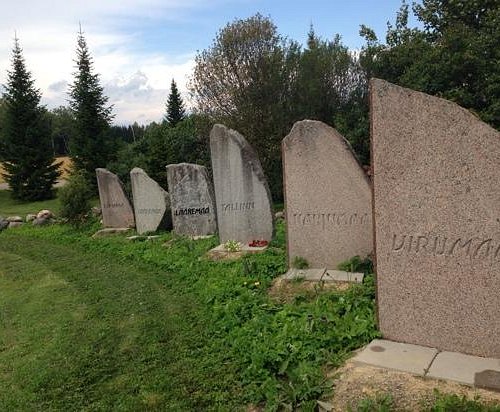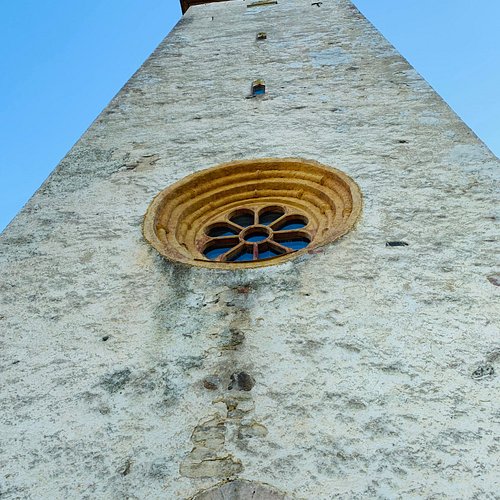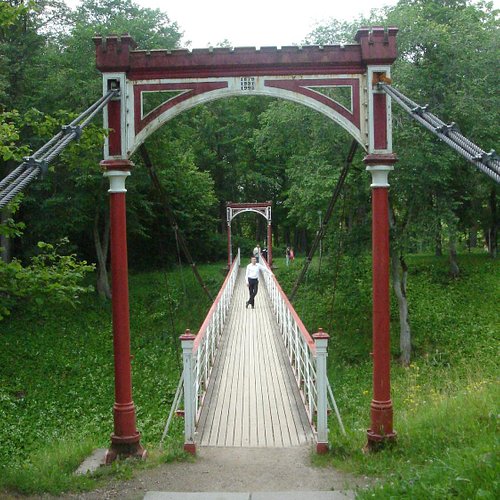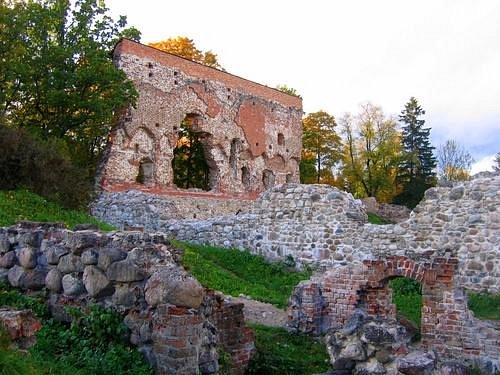What to do and see in Viljandi County, Viljandi County: The Best Sights & Landmarks
Discover the best top things to do in Viljandi County, Estonia including St. Peter's Church, Pilistvere Memorial, Tarvastu Order Stronghold Ruins, Lohavere Lembitu Hill-Fort, Pilistvere Church, St. John the Baptist's Lutheran Church, Olustvere Manor, Halliste Holy Anna Church, Viljandi Rope Bridge, Ruins of the Viljandi Order Castle.
Restaurants in Viljandi County
1. St. Peter's Church
Overall Ratings
5.0 based on 2 reviews
Church is peculiar thanks to its slanting tower that due to bad soil has inclined one meter to the west.In the middle ages Karksi church life was connected with the castle. In the castle built in 13th century there was also a chapel dedicated to apostle Peter. Present stone church was built in 1773-1778 using partly the foundation walls of the castle. The architecture of the church is extremely simple, a tower with baroque style broach is connected to the church hall, on the east side the sacristy was added.
2. Pilistvere Memorial
Overall Ratings
5.0 based on 4 reviews
Pilistvere Memorial is a tomb piled up from stones with a cross in front of the tomb. By carrying stones to the bottom of the cross Estonians remember their fellowmen who were deported to Siberia. This is a place were all Estonians who lost someone during the deportation can come to as to a symbolic grave and to honour them.
3. Tarvastu Order Stronghold Ruins
Overall Ratings
5.0 based on 1 reviews
The stronghold is thought to have been constructed on the site of an early Estonian hill fort in the 14th century. It is situated on the slope of a hill next to a picturesque river.On the northern side of the stronghold was a water mill, which also served a strategic purpose in defending access to the fortress. The tower next to the mill likewise served to protect the stronghold. In the fierce battles of the Livonian War the stronghold changed hands many times, and repeated bombing, burning and gunpowder explosions left only the walls of the original structure standing.Situated close to the stronghold is a chapel constructed in the early 19th century in Classicist style.
4. Lohavere Lembitu Hill-Fort
Overall Ratings
5.0 based on 1 reviews
Named after ancient Estonian chief Lembitu, the fort was founded at the end of the XIIth century and used for about 20 years. Towering in the middle of the forest, the hill of the fort with it's naturally deep slopes leaves an imposing impression even today. On the foot of the hill-fort a monument in freedom-fighters' memory is erected.Good to know:·Lembitu was the first Estonian to be mentioned by his name in historical records.
5. Pilistvere Church
Overall Ratings
5.0 based on 2 reviews
The stone church was built in the second half of the 13th century. It was constructed on the example of Suure-Jaani and other Jarvamaa churches. Pilistvere church resembles these by the arched choir area, nave and the tower. The church was destroyed several times during 17th to 18th century. It was reconstructed in 1762 which is also stated in the eastern wall of the church. The tower built in 1856 was destroyed in 1905 and reconstructed in 1990. Good to know: -The local priest was mentioned already in 1234. -Pilistvere church has the highest tower of all Estonian rural churches
6. St. John the Baptist's Lutheran Church
Overall Ratings
5.0 based on 1 reviews
The Suure-Jaani parish stretches over the area which at the end of Estonian Antiquity had Lembitu’s stronghold in Lohavere as its centre. Lembitu was a famous leader of an ancient Estonian county during the Ancient War of Independence.The church built in the middle of the 13th century consisted of the choir, the three-part nave and the steeple, possibly the first steeple in Estonia. The church got its present appearance from 1869 to 1872. Today, only few medieval details can be seen. Interesting to know:In the room under the steeple, there is a cross from the graveyard with the name Anne Ratecep and the year 1598 written on it. According to the legend, Anne washed and clothed the ones who had died of plague during the Livonian War. For that, the people dedicated a cross to her.
7. Olustvere Manor
Overall Ratings
5.0 based on 6 reviews
Olustvere Manor is one of the most fully preserved manor complexes in Estonia. In addition to the modern-style manor-house, also of interest are the estate manager's house, the red-bricked cattle yard, the dairy, the gates, the distillery and the barn. The heart of the manor is surrounded by rows of old trees and a lush English garden enclosed with tall stone walls. Various buildings of the manor complex house the collection of stuffed birds, wooden horses and antique furniture. It is also possible to visit the handicraft and wool rooms, the smithy, the ceramics workshop and the distillery. The tourist centre is located in the main manor house.
8. Halliste Holy Anna Church
Overall Ratings
5.0 based on 1 reviews
The Halliste Lutheran Church is one of the most beautiful and interesting churches in Estonia. The Halliste Church, which was seriously damaged in the course of various wars, acquired its present appearance in 1991 with the help of local initiative. When visiting the church, make sure to look at the altar painting entitled Christ by Estonian artist Juri Arrak and enjoy one of the frequent concerts.Interesting facts: - The church has an unusual black ceiling.- After a fire in 1959, the church stood in ruins for 30 years.- The oldest parts of the current stone church dates from the 15th century.- The Halliste Church is the home church of Estonian President Toomas Hendrik Ilves.
9. Viljandi Rope Bridge
Overall Ratings
4.5 based on 63 reviews
The bridge made by the Riga company Felser & Co in 1879 was erected amid the castle hills in Viljandi in 1931. It was a present by the lord of the Tarvastu Manor Karl von Mensenkampf.Interesting to know:*The bridge is over 50 m long.* It was erected over a valley which is 15 m deep.* At first, the bridge was located over the moat in Tarvastu to make it easier for the family of the lord to visit the chapel in the ruins. The rope bridge has become a favourite object of both citizens and visitors of Viljandi and one of the town’s important symbols. It was reconstructed in 1995.
Reviewed By parazzzite - Vilnius, Lithuania
Cute little bridge to observe nature and swing a little, if that is your thing. Nothing interesting on the other side, the bridge itself is fun for a quick stop
10. Ruins of the Viljandi Order Castle
Overall Ratings
4.5 based on 118 reviews
The stone castle started to appear on the place of the former Estonian stronghold in 1224. The fortress got its final shape and size in the beginning of the 16th century and was one of the distinguished fortresses in Estonia and Latvia. Due to wars between Sweden, Poland and Russia all that is left from the entire order castle today are just a few stone walls.Already in the beginning of the last century the ruins of the fortress and the park around it turned into a recreational area for the residents of Viljandi. In order to access the castle hills from town a rope bridge was build from the Kaeuvumagi hill over the 13 meters deep trench in 1931. From the ruins you have the most beautiful view over the lake of Viljandi.
Reviewed By 942ld - Meise, Belgium
This park with the ruins breathes a great history, Viljandi is often called the most beautiful rural city of the baltics and this is certainly one of the main reasons. The ruins offer great views on the lake and the surrounding areas. The park also houses several nice areas where kids can play.







